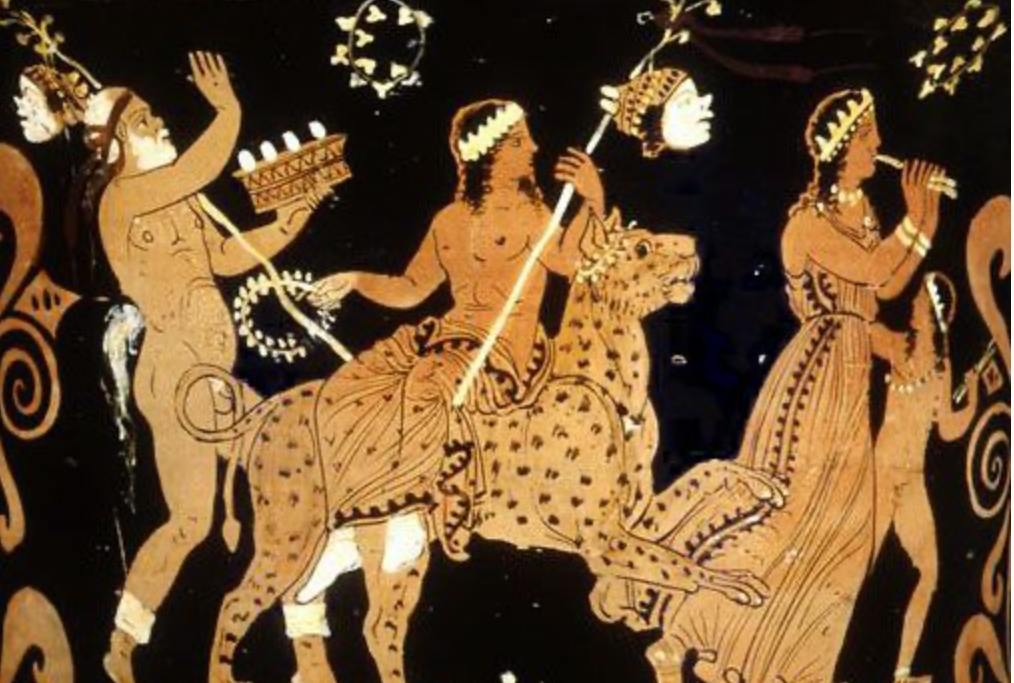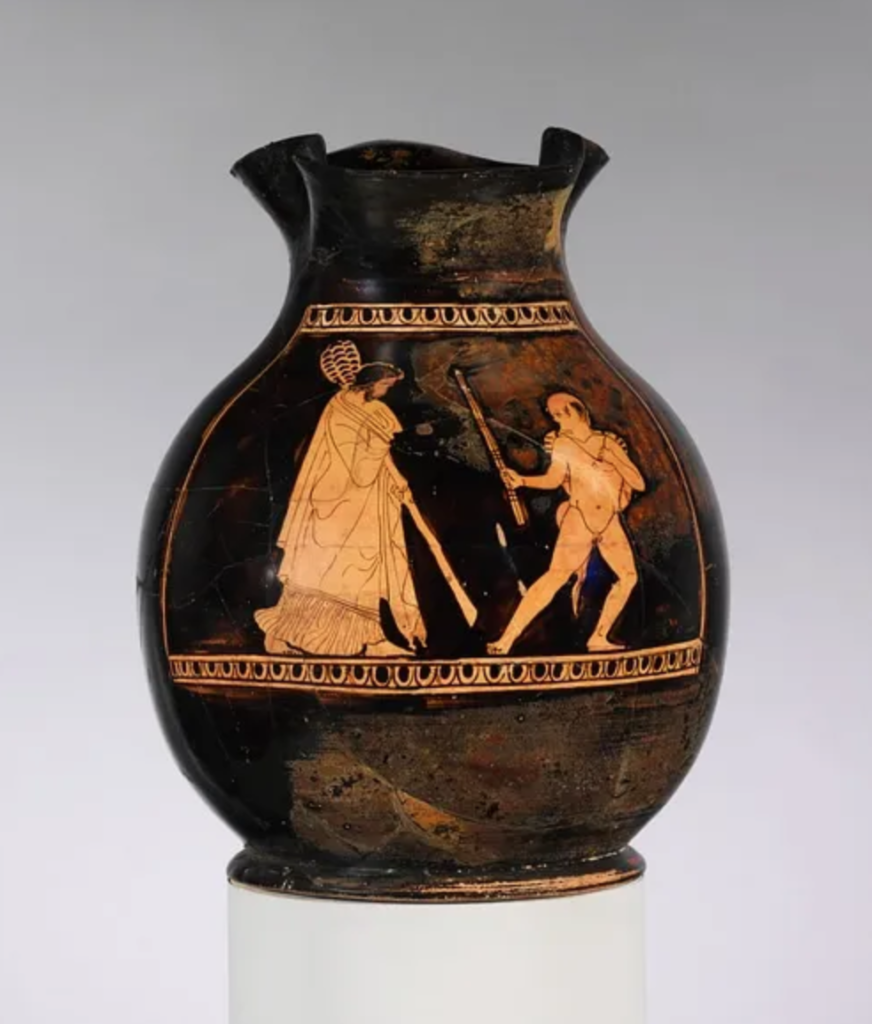History has not survived the glance of the modern human. In most places around the world, when one looks out of their window, the eye is stuffed with the freneticism of automobiles, highways, clunky concrete construction––a memory constricted and innumerable epochs forgotten. But in the Blue Zone of Ikaria, where the god of wine, ecstasy, and ritual madness was born inside the Cave of Iero, Dionysus’ ancient influence still thrives. Frequent sights around the island include revelrous traditional dancing––pliable men over the age of sixty bouncing from their knees back up to their feet with the jauntiness of newborn calf; the communal consumption of Ikarian wine, crisp and hazy, earthen and ancient; rich picnics on the ruins of the Temple of Artemis; and on New Year’s, the spirited exchange of stories, songs, and delicious traditional deserts like honey dough puffs and halva as neighbors take turns hosting and visiting each other until the early (or late) morning hours. Time is not lost here; years immemorial and years freshly born entwine into the present through the vividness of drunkenness: off of wine, love, and community.

Ikaria And The Cult of Dionysus
Dionysus (known to the Romans as Bacchus) is the god of wine, festivity, fertility, insanity, and ritual madness. The origin of the cult of Dionysus traces back thousands of years. Although much information about the cult has been lost to history, mostly due to its secrecy as a mystery religion whose interior was reserved only for the initiated, its infamous bacchanalias are a testament to the everlasting influence of the ecstasy and insanity of fearless worship. Because Dionysus has two purported birthplaces on the island of Ikaria, the cave of Iero and atop Mount Pramnos (now known as Mount Atheras), the orgiastic influence of this god was strong upon the ancient Ikarians. Usually taking place in the month of March, the Dionysian Mysteries were festivities that celebrated their god through many means, the most mundane of which included dramatic plays of comedy, tragedy, and satire. Acting, poetry, and music were central parts of the worship, in which competitions were held for the greatest actors and awards given.

Ikarian Wine as Sacrament
However, most of the Dionysian celebrations were birthed from a more animalistic, ecstatic place in the unconscious anima of the worshippers. Central to the invocation of such wildness was the role of Ikarian wine. The cultivation of grapevines was crucial to the followers of Dionysus, as the growth, harvesting, and fermentation of the grapes were to them the living embodiment of their god, much like today’s Christian rite of Eucharist. The nurturing of the grapes from seed to swollen fruit represented the growth and ingression of the body of Dionysus into the physical world. The harvesting and fermentation of the grapes distilled the dismembered body of Dionysus into a drinkable brew through which his essence could be directly absorbed. When the winemaking process was complete, worshippers poured the wine onto the grapevines in order to complete the birth, death, and rebirth cycle of Dionysus. In this sense, these ancient winemakers did not simply tend to the physical process of the grape’s transformation from seed to blissful brew, but acted as alchemical emissaries to their god, transforming his ineffable presence into living, tangible, and rapturous communion. These Ikarian grapes were the bridge between matter and spirit, mundanity and ecstasy, the inexpressible and the deeply embodied. Through this brew, worshippers broke free of the constraints of humanhood and propriety and were elevated to the mystical status of their god.

This Pramnian wine (of Mount Pramnos) was a central ingredient in kykeon, a brew that included grated cheese and ergotized barley, whose psychoactive effects are used today to create LSD-25. The hallucinatory effects of the brew opened the doors of perception to these ancient peoples during these divine rites. By ingesting the Ikarian wine, they became possessed by the spirit of Dionysus. It was through this process of divine drunkenness that the god of insanity and ritual madness intoxicated his followers, unleashing some of the most infamous rites known to human history.
Orgy and Ecstasy
The rites of Dionysus were unique in that they began as a secret communion and worshipping ground for women only, and soon expanded to include men, low-ranking citizens, slaves, miscreants, outlaws, and foreigners. The presence of the god of ecstasy acted as a great equalizer, an excuse to transcend the mundane propriety of society and to revel reckless and rapturous among the elysian realms. Central to these celebrations were orgies, violence, feasting, trance, dance, music, ritual madness, frenzy, and of course, lots of wine-drinking and communal drunkenness. These vigorous and exhausted states of the body encouraged the consciousness of the worshippers into divine altered states, where Dionysus was deeply and frenetically alive in the psyche and soma of every participant.

Musicians would invoke the spirit of Dionysus through the crying call of the bullhorn, and hours of trance would ensue by the echoing thrum of the drum. Worshippers would ascend mountains in ecstatic trance, crying the name of their god, as described by Peter Hoyle in his book Delphi:
Following the torches as they dipped and swayed in the darkness, they climbed mountain paths with heads thrown back and eyes glazed, dancing to the beat of the drum which stirred their blood (or staggered drunkenly with what was known as the Dionysus gait). In this state of ekstasis or enthusiasmos, they abandoned themselves, dancing wildly and shouting “Euoi” (the god’s name) and at that moment of intense rapture became identified with the god himself. They became filled with his spirit and acquired divine powers.

Central to the cult of Dionysus included the bull, whose horn was used as a wine chalice, and the goat, whose skin was used to carry the wine. The sexuality of the satyr was also venerated, whose erotic energies were central to the revelry. Dionysus’ pine-cone adorned staff was another important symbol. The pine cone represents the pineal gland, which has been known throughout history as the gateway to the soul. This is the gland that produces endogenous DMT, a potent psychedelic substance known as “the spirit molecule.” Doubtlessly, hours of vigorous sex, dancing, and drumming induces the increased production of this molecule in the brain, the manifestation of the god within.
Dionysus is Alive in Ikarian Wine
Although the cult of Dionysus no longer enthralls a wide populace, his ecstasy and liberation still exist in the amphora fermenting his spirit in the grounds of Afianes winery, in the shared joy of the third or fourth or fifth glass of wine, in the intimate storytelling that unravels through a shared bottle. It is quite unfortunate that such spirited and reckless self-expression is no longer as potent as it was in ancient Greece, but the Blue Zone of Ikaria remains both ageless and timeless in its earnest continuation of this history through ancient winemaking practices and tightknit community. Here is the island where grandmas dance to traditional Ikarian music until six in the morning, where primeval stars churn over the wine-dark sea of Homer, where gentle drunkenness and “one more bottle” shared between family and friends perpetuates the night, the jest, the memory, the god, of a land much different and yet still much the same.



